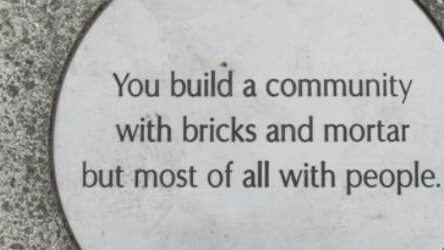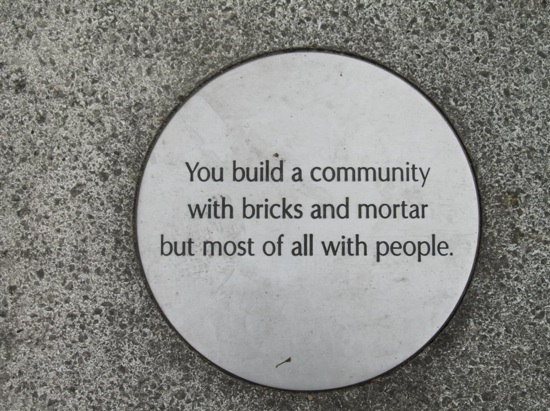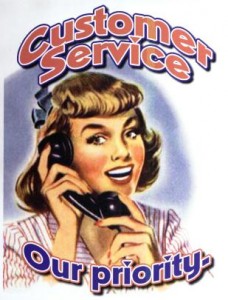

 Extension of customers service: Online communities are a great platform to extend and improve customer service, by taking note of customers’ common issues and addressing problems in a more personable way while providing true value to their customers. Apart from monitoring the community to gather valuable information on their consumers’ problems and shopping dilemmas, brands can generate leads and be inspired by the ways customers choose to address problems themselves or review, use and recommend their products or services. The Best Buy Community addresses customer service issues and hosts discussions on the day to day use of Best Buy products. The community also has its own Twitter account that reaches out to the Twelpforce pointing to the community’s questions that need feedback by pros.
Extension of customers service: Online communities are a great platform to extend and improve customer service, by taking note of customers’ common issues and addressing problems in a more personable way while providing true value to their customers. Apart from monitoring the community to gather valuable information on their consumers’ problems and shopping dilemmas, brands can generate leads and be inspired by the ways customers choose to address problems themselves or review, use and recommend their products or services. The Best Buy Community addresses customer service issues and hosts discussions on the day to day use of Best Buy products. The community also has its own Twitter account that reaches out to the Twelpforce pointing to the community’s questions that need feedback by pros.
Hewlett Packard is also doing a great job, by breaking down its forums into mini-communities with specific focus like the Consumer Support Forum and the Enterprise Business Community. Integration between branded online communities and mass social media is a hot trend for 2011. (In 2010 it increased from 32% to 76%.) Implementing a social media login could encourage more visitors to join into the discussions and spread them across all different platforms, like Sears does on its community.
Mixing the offline with the online world: To make the best out of this kind of online conversation, brands try to figure out ways to integrate them into the in-store experience. For instance, Sears organizes consumer electronics in-store product demos extending invitations to bloggers and plans to organise more events with the Blue Blogger Crew. Sears also brought Kmart’s community to life, by incorporating customer reviews onto store shelves for select games. Another way would be to allow community members to stay connected by providing easy access to the community via mobile or in-store installed tablet devices.
 Socializing: Building strong relationships, as well as making sales are all about emotion. The fact that someone is a loyal customer to a brand speaks volumes about that person’s lifestyle or the lifestyle he/she aspires to have. Communities can spark conversation on their members’ common lifestyle, and highlight the connection between the brands’ products and their passions.
Socializing: Building strong relationships, as well as making sales are all about emotion. The fact that someone is a loyal customer to a brand speaks volumes about that person’s lifestyle or the lifestyle he/she aspires to have. Communities can spark conversation on their members’ common lifestyle, and highlight the connection between the brands’ products and their passions.
Many brands have built custom made not product-centric, but lifestyle-centric social networks to connect further with their customers. For instance Patrón tequila has built its own social network, integrated with Facebook connect, that is content-driven around dining and cocktails. The club also connects its members offline by organizing “secret” dining experiences featuring Patrón cocktails in different cities. Another example is the Monster Energy drink community: Monster Army that connects extreme sports enthusiasts.
Empowering their customers: Embracing their customer’s success as their own success, many brands have built content-driven communities that empower their members, serving as a source of business information. American Express has built the awarded with People’s Choice award in the nontech companies category for its OPEN Forum, an online community for small-business owners featuring an expert blogger team. OPEN Forum also organizes live networking opportunities and have a mobile site and app, providing online and offline networking opportunities. The HSBC Business Network also enables business owners to connect and exchange advices, while the Threadless community helps designers promote and get feedback on their work.
Crowdsourcing: Companies have embraced crowdsourcing as a way to deepen their relationship with their customers by bringing them into the creative process and making them part of their family. My Starbucks Idea, MySears Ideas and Best Buy’s IdeaX are all promotional tools to ask customers to brainstorm and contribute their vision for the brand’s future. Communities provide great platforms for more creative crowdsourced projects like Toyota’s Ideas For Good, for suggestions on how the brand’s technology can be used for good in unexpected ways, LEGO’s LEGO click collaboration platform, for new ideas relating to toys and technology and Nike’s iD Nation a community that challenges its members to design the ultimate pair of Nikes and share their style and designs.
What are your favorite online communities and what trends do you think will be hot for branded community building in 2011?
Get the TNW newsletter
Get the most important tech news in your inbox each week.




